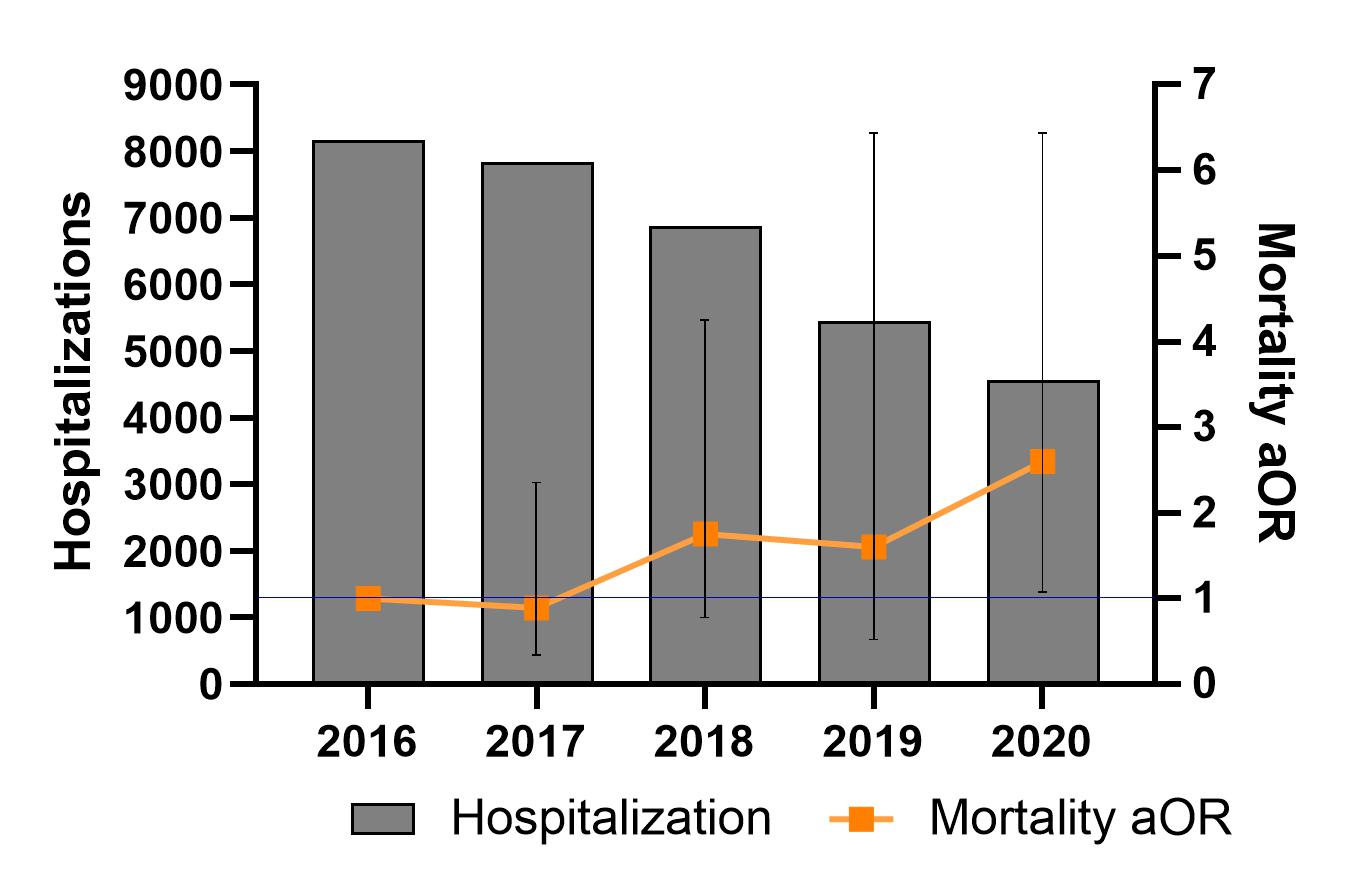Session Information
Session Type: Poster Session B
Session Time: 10:30AM-12:30PM
Background/Purpose: Introduction: In the past decade, the incidence of Lupus Nephritis (LN) flares linked to mortality has generally decreased, though an upward trend has emerged since 2015. However, this trend has not been investigated in the context of the COVID-19 pandemic. Additionally, there is a lack of research addressing disparities in LN during the COVID-19 era. We aim to examine the trends of LN flares, hospitalizations, and disparities during the most recent years to identify those gaps in the literature.
Methods: We conducted a retrospective analysis using the National Inpatient Sample (NIS) database from 2016 to 2020. LN hospitalizations were analyzed and stratified by year using the International Classification of Diseases – 10 Clinical Modification (ICD-10-CM) codes. The primary outcome was the trends of mortality among patients with LN. Secondary outcomes included LN flares/hospitalizations, disparities, length of stay, and total hospital charge. Student’s T-test, multivariate logistic regression, and linear regression were used.
Results: Between 2016 and 2020, there were 865,670 hospitalizations with Systemic Lupus Erythematosus (SLE). Of patients with SLE, 125,680 (14.5%) patients had LN. Among patients with LN, 32,915 (26.18%) were admitted to the hospital with an LN flare. Overall, LN flares decreased by 56% from 2016 to 2020 (p< 0.001). However, the adjusted Odds Ratio (aOR) of mortality has been increasing since 2016, with a statistically significant difference in 2020 compared to 2016 (aOR for mortality in 2020 was 2.61 CI: 1.04-6.55, p=0.04). The length of stay for patients with LN was 6 days with no change over time, but the hospital charges gradually increased from 65,000$ in 2016 to 82,822$ in 2020. The mean age for patients who died with LN was 36.2, with no change over time. Women accounted for 81% of all deaths, and the African American population accounted for 42% of deaths. However, there was no statistically significant change in those trends over time.
Conclusion: Over time, patients with LN have fewer flares, but patients who are admitted to the hospital have increased odds of mortality, especially in the year 2020 with the strike of COVID-19.
To cite this abstract in AMA style:
El Sharu H. Trend Analysis of Lupus Nephritis Flares, Mortality, and Disparities: 2016-2020 [abstract]. Arthritis Rheumatol. 2024; 76 (suppl 9). https://acrabstracts.org/abstract/trend-analysis-of-lupus-nephritis-flares-mortality-and-disparities-2016-2020/. Accessed .« Back to ACR Convergence 2024
ACR Meeting Abstracts - https://acrabstracts.org/abstract/trend-analysis-of-lupus-nephritis-flares-mortality-and-disparities-2016-2020/

